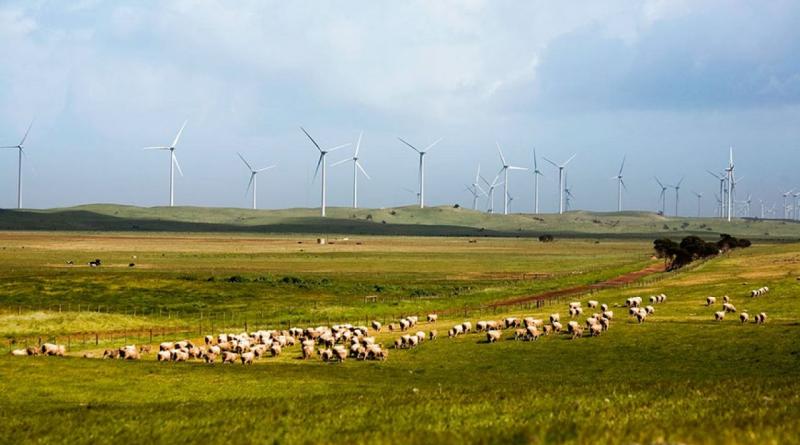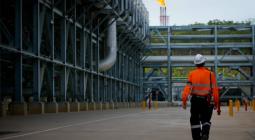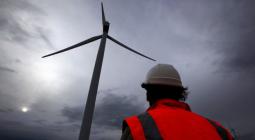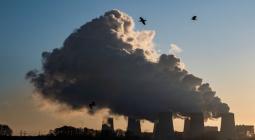“Yes we can”: Energy experts plot path to fossil-free grid.

Engaging with climate and energy policy in Australia can be bad for your neck. Either your head is in your hands as the latest political idiocy unfolds, or you suffer whiplash as you encounter smart concerned people who are dealing with real world issues. It’s a long way from Angus Taylor’s grotesque display at the National Press Club on Tuesday to Thursday’s public forum “Australia: the global renewable energy pathfinder”, organised by the Energy Change Institute of Australian National University.
The contrast between the fantasy technologies and gassiness of the former, and the big-picture, but also intensely practical nature of the second could not be any more stark.
Moderated by the ANU’s Dr Liz Ratnam, and introduced by Prof Ken Baldwin, ECI Director , the seminar heard from five experts, followed by a Q and A. The recording will be available in due course on ANU TV, and will be an invaluable resource for anyone interested in what is being done, and can be done to secure energy and electricity supplies for Australia’s future in ways which accept the reality of climate change and the need to do something (or rather, everything) about it.
Mark Williamson, from the Clean Energy Regulator, spoke on the latest solar and wind deployment trends.
He pointed to the huge increase in renewable generation over the last few years (from 1.2GW in 2016 to over 6GW last year). Rooftop solar has been key to this, with a spike in utility scale solar 2018 and 2019, with 2020 as the year of new wind, but 2021 expected to be another year of utility-scale solar.
Williamson was at pains to point out that consumers acting totally rationally in purchasing rooftop solar.
Prof Andrew Blakers (ANU) spoke on Australia as the global renewable energy pathfinder in areas including deployment rates, greenhouse emissions trends, and South Australia’s goals. Blakers has been working on renewables, both on the technology and the policy advocacy for thirty years, and has admirable and inexhaustible optimism.
He said that solar and wind have won the race ,and that it was hard to see other renewables catching up in next few decades. He said that Australia is “right at the top” on the amount of total installed pv per capita and the speed with which it is deploying new solar pv per person per year (of course, thanks to thirty years of successful resistance to the energy transition, Australia is also at the top in terms of per capita carbon footprint something neither Blakers nor any other panellist addressed.
“Something remarkable is happening”
Blakers argued that “Something remarkable is happening in Australia”. By end of year wind and solar and hydro will deliver 26% of the National Electricity Market, with 60% solar and wind in South Australia – making it the “most remarkable jurisdiction in the world”
He foresees solar and wind passing the combination of gas plus brown coal imminently, passing black coal in 2023, when Liddell closes, and by 2025 will pass 50% of generation for the NEM. He was scathing about the gas that Angus Taylor shilled two days ago –
“Gas this wonderful transition fuel is pretty tired…. Gas is not a transition fuel, it’s just nonsense,” Blakers said. “Gas is on the way out, it is not on the way up”
Blakers argued for strong interstate transmission, demand management and storage – pumped hydro and battery. He urged everyone to “think big” pointing to the need to electrify everything, including heating and transport in order to decarbonise. This will need a tripling in electricity generation (450GW), and the solving of transmission into cities… Returning to this point in the Q&A he said ““Whatever we are dealing with here is just peanuts of where we will be.”
For Blakers, the policy imperative is simple “we need governments to quickly approve big fat cables to Renewable Energy Zones and to make it attractive for companies to build them”.
“Yes we can”, says AEMO
Alex Wonhas (Chief System Design and Engineering Officer, AEMO) gave a presentation entitled “Yes we can – Australia’s future energy pathways. The 2020 Integrated System Plan and Renewable Energy Zones.”
He thanked the 200 people across the industry who had helped produce the ISP– “it would not have been possible without their thoughtful and considered input.”
The ISP puts forward five different scenarios, with the step change one being consistent with the Paris Agreement aspirations (or obligations, depending on how you look at international law and intergenerational ethics).
This goes beyond mere least-cost replacement of soon-to-exit sources such as coal, for the reasons Blakers had mentioned. Wonhas warned that “the rate of change required is phenomenal” while also making the important but often-neglected point that consumers will save money if Australia moves to an intelligent and robust system, as opposed to a sub-optimised one.
The challenge is enormous – 27 Gigawatts of capacity will be exiting over the coming 10 to 15 years, with 22GW of this being coal. Replacing this (let alone expanding generation) will require lots of new renewables and firming, in the form of all types of storage.
Although the challenge is enormous, Wonhas was cautiously optimistic, arguing that we are already on the trajectory to do that It needs 2.6 GW per annum and “despite the challenges is something we can achieve today”.
Wonhas foresees that “in 20 years 94% of Australia’s electricity will come from renewables, which would be a remarkable outcome.” He also argued that according to the careful modelling AEMO had done: “You don’t need a lot of baseload power”
What it will need is something like 30 percent of 2-hour storage, 30 per cent of 3 to 20 hrs, and 20 percent above 12 hours and another 20 per cent behind the meter. But Wonhas warned: “From a technical point of view to get that system to work is not trivial.”
The four things to look at and deal with are supply and demand balance; uncertainty and variability, frequency and system strength, and voltage
“Batteries are phenomenally good”
Wonhas was upbeat however, saying: “We are fortunate that batteries are phenomenally good at managing frequency. It’s a question of getting incentives right to get battery operators to come into the market.”
He finished arguing that there is a need to focus on developing and deploying new technologies, and that we “can manage through this transition…”
Jenny Riesz (Principal, Operational Analysis and Engineering, Australian Energy Market Operator, AEMO) spoke compellingly and clearly on “Technical integration of Distributed Energy resources – An operational perspective,” drawing heavily on South Australia’s recent history and probably future. In one to three years operational demand in South Australia could become negative (the problem of “too much energy”)
She focused on what AEMO has been doing around three particular challenges
Firstly, on distributed PV disconnection, they have been working with Solar Analytics for 2 years analysing real world behaviour, and done bench-testing too. From the results of this they have calibrated their power system models, since a severe fault can cause significant disconnection, and loss of large unit alongside the loss a great deal of PV (over 100MW)
Currently, AEMO doesn’t have capacity to deal with that if there were an islanding event in South Australia, with issues soon expected to emerge in Victoria too. Riesz was explicit on the need to improve standards for distributed PV, and for standards for inverters: 30 to 40% of inverters not complying – installation process as the main issue.
Project Energy Connect (the proposed new link from SA to NW) will increase resilience.
Secondly, it’s obvious that there is a minimum load required to operate necessary units (system strength, inertia, frequency control, voltage management), especially if there are islanding events.
Minimum loads in South Australia have been as low as 379MW a few Sundays ago
AEMO is aware that it will need capacity to turn down distributed PV if there is an islanding event, but it but definitely did not think that this would be regular occurence.
Finally, she spoke about Under Frequency load shedding – a safety net for arresting severe events such as losing an interconnector, losing lots of generation
As per Alex Wohnas, Reisz pointed to big batteries as being extremely good at frequency control. She pointed out that this had not been anticipated under the market rules, so it has been hard to incentivise, and needs figuring out.
The final speaker, Associate Professor Matt Stocks (ANU) spoke about The long term: 50-100% renewable electricity & energy (transmission and storage; increasing electricity demand from EVs and heating; FNQ connection). Inevitably, his presentation also drew on the South Australian experience. He spoke about four particular issues-
Technological Diversity
This leads to a need for mass storage, which is expensive, inefficient, but as lots of variable renewables come into the grid, becomes more important part of the system. He argued that batteries ((behind the meter and grid) and pumped hydro are complementary rather than antithetical.
Wide geographical dispersion – smoothing-out local weather
He pointed to high voltage DC for moving energy long distances, giving the example of the 3000k long, 12 Gigawatts (a third of Aus demand) by China’s Changji Guquan HVDC with only 10% losses… Another HVDC, a North Sea Link is due to open next 2021.
Demand management
Done well, Vehicle to Grid will provide lots of flexibility, as will behind the meter batteries. More interconnection and smart demand management reduces the need for storage… and for the amount of overbuild required…
After showing work about the costs involved in supplying energy needs for three different kinds of grid (based on amount and type of interconnectedness) Stocks’ main point was that invest in transmission leads to less storage needs.
There was an extensive Q&A which I can’t do justice to. Just a couple of key points must suffice-
Alex Wonhas argued for the need to establish standards and effective infrastructure and regulation for EVs sooner, rather than later, before EVs become really big. The right charging infrastructure is needed, but he doesn’t see urgency at the moment
For Jenny Reisz, while Australia really is a pioneer, there is a need to do it all very quickly . It’s imperative to sort out power system security, all the frameworks and incentives
For Matt Stocks, the transmission challenge is not a technology issue but also a policy one. Today’s system is very different from what it was built for, so AEMO’s ISP is crucial for identifying bottlenecks, unlock them…
Yes, there was a conspicuous absence of any discussion about what the other mob in Canberra – the politicos and the fossil fuel lobbyists – were doing and planning to do. Yes there was the typical engineers’ perspective on what was technically possible rather than politically feasible (especially given the enormous power of the fossil lobby over both main political parties).
Nonetheless, this was an informative and invigorating (even inspiring) webinar that is well worth a close and even-repeated watch. There may be hope after all.
Dr Marc Hudson completed his PhD at University of Manchester. It examined the strategies used to prevent carbon pricing in Australia between 1989 and 2011. He is now employed at Keele University, England.
25 September 2020
RENEW ECONOMY





